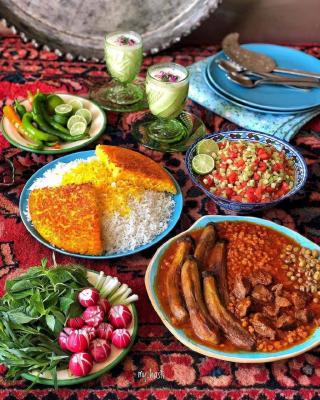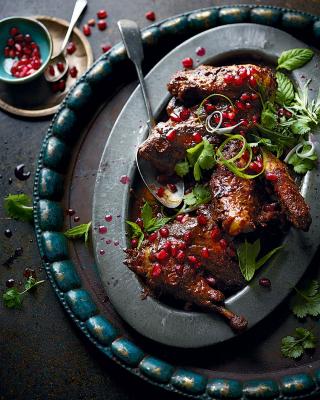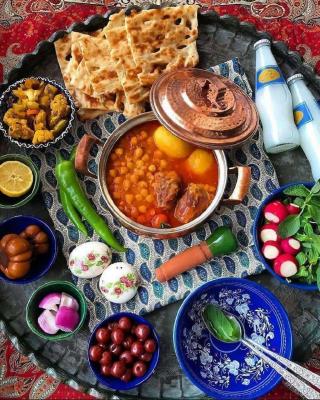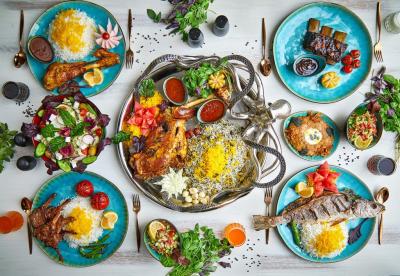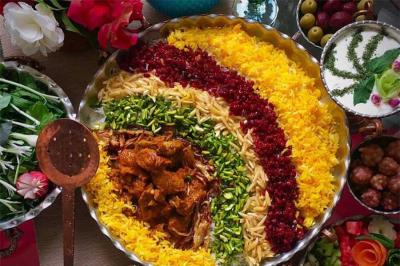Iran Cuisine (I) everything you should know about Persian food culture
Food culture
Traditional foods are those foods that have been consumed in a country for a long time and have been passed down from generation to generation. The concept of food culture is much more complicated than what you see on a plate. Food operates as an expression of cultural identity. Immigrants bring the food of their countries with them wherever they go and cooking traditional food is a way of preserving their culture when they move to new places. Food is an inseparable part of their cultural heritage.
Anthropologists have long regarded eating habits as a complex set of culinary activities, cravings, beliefs, taboos, and illusions associated with food production and preparation. Food as a meaningful cultural activity emphasizes social relations. Due to the existence of different ethnicities and regions in the geographical area of this country, Iran has a great diversity of food. From north to south and from east to west, each region has its own food according to its available and raw materials; But not everything is limited to availability. The taste of each region’s food depends on the culture and lifestyle of the people. It can even be said that the type of material people use to make food is a cultural symbol to show the civilization and progress of any society.
Indigenous products, the type of fuel, and the lifestyle of the people, in general, have played vital and influential roles in contributing to the livelihoods and diet of the population and the emergence of food culture in each region. Iran has different climates which led to the creation of tropical, cold, desert, marine, plain, and mountain zones. The combination of climate and fertile soil provides a variety of agricultural products that are the basis for the formation of the food culture.
Major staples of Iranian food that are usually eaten with every meal include rice, various herbs, cheese, a variety of flat breads, and some type of meat (usually poultry, beef, lamb, or fish). In ancient times in Persia, the rice wasn’t used in large quantities as it is today, and on the contrary, legumes and a variety of seasonal and local vegetables were the main part of the Iranian table. But now, stew over rice is by far the most popular dish in the country. There are also some green dishes in every region for vegans. Being a vegetarian in Iran is quite new and we can say the infrastructure for it is not yet ready. But people have been using green meals on their daily dishes unconsciously so it’s not hard to find such foods in the country.
The way of serving and cooking food, such as brewing rice and tea, has a special place in Iranian food and culinary culture, and it seems that the value of food for Iranians is far beyond providing energy and relieving hunger. The common customs of sitting around a tablecloth settled on the ground, eating salad, Torshi (sour side food), yogurt, etc. with their food, and hosting every ceremony with a variety of colorful foods perfectly shows the importance of food.
Dr. Peyman Matin and Dr. Masoumeh Ebrahimi have said in their book "Tea Drinking as Culture":
As a person becomes more socialized throughout his life, the role of culture in food consumption becomes more apparent. To such extent that food consumption reflects the individual and social status of human beings such as age, gender, religion, geographical location, and economic conditions. It is therefore not in vain to call the practice of eating merely a cultural activity and to regard it as a means of "expression." This has laid the groundwork for what anthropologists call "food language" because eating is a symbolic expression through which not only individual identity but also the various layers of society are revealed. Thus, we see that much of the research on food leads to an understanding of socio-historical conditions, economic and symbolic structures, and values of society.
If you enjoyed this article, stay with us and read part two of this sequence. Don’t forget to check out YaldaMedTour-foods for more.
Iran Cuisine (I) - everything you should know about Persian food culture Iran Cuisine (I) - everything you should know about Persian food culture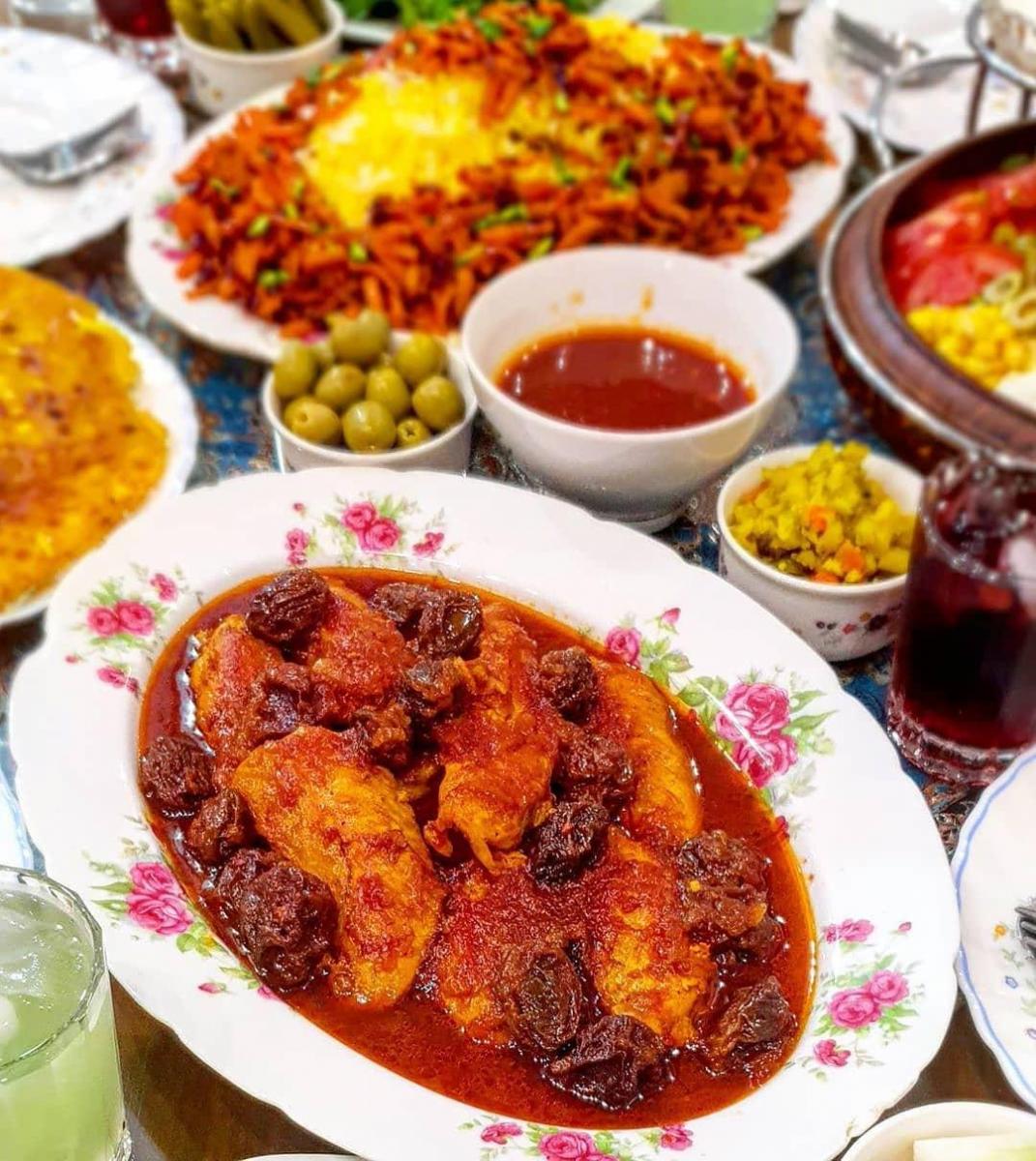 2020-08-23 16:58:07+3:30
2022-05-09 15:41:54+3:30
Traditional foods are those foods that have been consumed in a country for a long time and have been passed down from generation to generation. The concept of food culture is much more complicated than what you see on a plate. Food operates as an expression of cultural identity. Immigrants bring the food of their countries with them wherever they go and cooking traditional food is a way of preserving their culture when they move to new places. Food is an inseparable part of their cultural heritage.
Iranian Cuisine,
Iranian Food,
Iranian Cooking,
Persian Cuisine,
Persian Food,
Persian Cooking,
eyJpdiI6IkNZOXdKSy9USm5QL3JRYXBVWGVXSFE9PSIsInZhbHVlIjoiNnNHNElyT0czZEFuMGJLSUNlSHZ5QT09IiwibWFjIjoiMWYzY2Q4ZjM1ODYyNWM3YWNmMTIyMzE4YTNhNGY3NGYwZjU2MGUzYTQxYzVmY2ExNjVjMmE1ZDYzODZkZGY4MiIsInRhZyI6IiJ9 eyJpdiI6ImNSSW5pZ0I5VHlJc3A3U09VWFRZTWc9PSIsInZhbHVlIjoiM05NMUZtV0NQenFsOHFNWFRKUTJ0QT09IiwibWFjIjoiZTllZGE4NjhiY2YzNjEzYTI1MmIyY2RkZjEyNzI5NjdiZGQ3YzEzOTY5ZDk2NDZkZWZjNzk4YzI2N2M0MzdkNyIsInRhZyI6IiJ9
Author
info@yaldamedtour.com
/en/user-profile/10233
YaldaMedTour
Barajin Salamat Road
+98
Qazvin
Qazvin, Qazvin Province, Iran.
,
info@yaldamedtour.com
2020-08-23 16:58:07+3:30
2022-05-09 15:41:54+3:30
Traditional foods are those foods that have been consumed in a country for a long time and have been passed down from generation to generation. The concept of food culture is much more complicated than what you see on a plate. Food operates as an expression of cultural identity. Immigrants bring the food of their countries with them wherever they go and cooking traditional food is a way of preserving their culture when they move to new places. Food is an inseparable part of their cultural heritage.
Iranian Cuisine,
Iranian Food,
Iranian Cooking,
Persian Cuisine,
Persian Food,
Persian Cooking,
eyJpdiI6IkNZOXdKSy9USm5QL3JRYXBVWGVXSFE9PSIsInZhbHVlIjoiNnNHNElyT0czZEFuMGJLSUNlSHZ5QT09IiwibWFjIjoiMWYzY2Q4ZjM1ODYyNWM3YWNmMTIyMzE4YTNhNGY3NGYwZjU2MGUzYTQxYzVmY2ExNjVjMmE1ZDYzODZkZGY4MiIsInRhZyI6IiJ9 eyJpdiI6ImNSSW5pZ0I5VHlJc3A3U09VWFRZTWc9PSIsInZhbHVlIjoiM05NMUZtV0NQenFsOHFNWFRKUTJ0QT09IiwibWFjIjoiZTllZGE4NjhiY2YzNjEzYTI1MmIyY2RkZjEyNzI5NjdiZGQ3YzEzOTY5ZDk2NDZkZWZjNzk4YzI2N2M0MzdkNyIsInRhZyI6IiJ9
Author
info@yaldamedtour.com
/en/user-profile/10233
YaldaMedTour
Barajin Salamat Road
+98
Qazvin
Qazvin, Qazvin Province, Iran.
,
info@yaldamedtour.com
Keywords: Iranian Cuisine, Iranian Food, Iranian Cooking, Persian Cuisine, Persian Food, Persian Cooking,
Copyright © 2025 To YaldaMedTour. All Rights Reserved.
![]()
